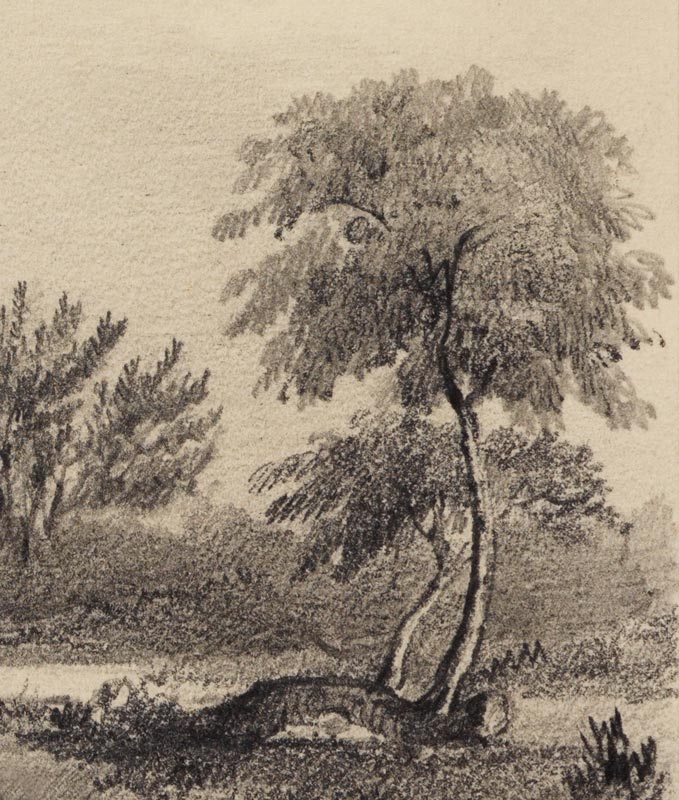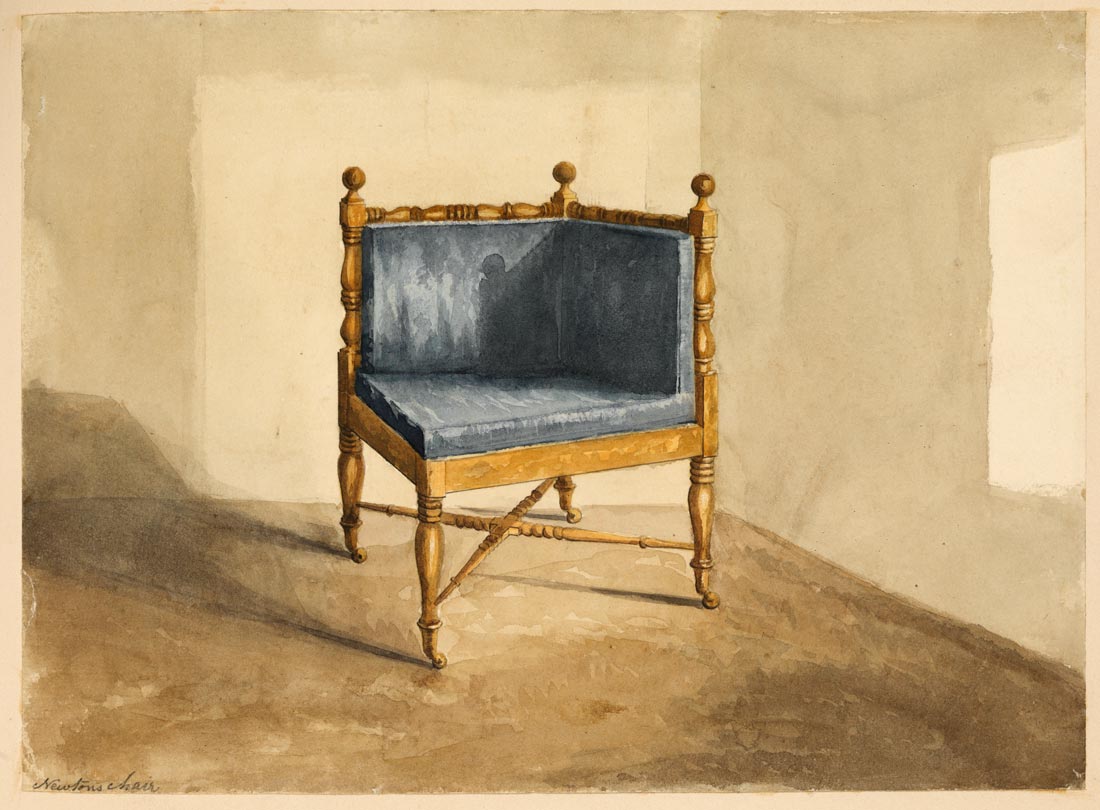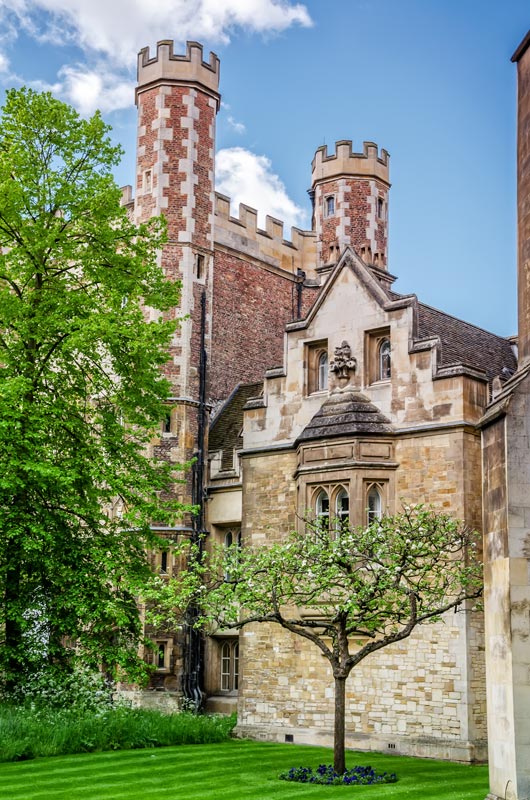Newton and the Apple Tree
The apple tree that defined and defied gravity.
Newton’s eureka moment when he witnessed an apple falling to the ground not only led to a scientific breakthrough which would define the laws of gravity, but also marked the start of a universal journey for one apple tree.
Today marks the anniversary of the publication of Sir Isaac Newton’s hugely influential Philosophiae Naturalis Principia Mathematica (1687) in which he laid down the foundations for his theories on the laws of gravity and motion. Recognised as one of the most important scientists of all time, Newton’s most celebrated theory was of course connected to the apple. A commemorative stamp was released in celebration of his discoveries to mark the 300th anniversary of the book’s publication.
It was whilst in self isolation at his family farm, Woolsthorpe Manor, during the Great Plague that the 23 year old Newton pondered the gravitational pull of an apple falling to earth. This eureka moment led to Newton formulating the Universal Law of Gravitation but also immortalised the Flower of Kent apple tree from which the apple fell. The event was recounted by friend and fellow scientist William Stukeley in his biography of Sir Isaac Newton (1752).
“…he told me, he was just in the same situation, as when formerly, the notion of gravitation came into his mind. Why sh[oul]d that apple always descend perpendicularly to the ground, thought he to himself; occasion’d by the fall of an apple, as he sat in a contemplative mood…”
Original artworks depicting the tree and Woolsthorpe manor are now held in the collection of The Royal Society where Newton was formerly a President. Known as the “Collectanea Newtoniana” it was donated by 19th century astronomer and collector Charles Turnor (then owner of Woolsthorpe). The collection includes Stukeley’s original memoirs as well as original artwork and manuscripts relating to Newton and the apple tree itself. Apparently after a storm brought the original apple tree down it was made into, amongst other things, a chair. There is a watercolour of Newton’s chair by Charles Turnor in the Royal Society’s collection as well as a fragment of apple-wood inscribed with Newton’s initials.
In May 2010 this piece of wood was taken into space on NASA shuttle mission STS-132 as part of the Royal Society’s 350th anniversary celebrations. Speaking before the mission, Nasa astronaut Piers Sellers said ‘I’ll take it up and let it float around for a bit, which will confuse Isaac’.
In 2015 British astronaut Tim Peake named the mission to the International Space Station ‘Principia’ after Newton’s publication and took pips from Newton’s tree with him. These Space Saplings have now been planted at special locations around the UK.
But what of the apple tree now? An offshoot of the original tree began to grow even after the original tree was blown down and this can be seen in the George Rowe drawing. This subsequent tree is still at Woolsthorpe and grafted descendants of it are found worldwide with one tree growing at Newton’s alma mater Trinity College, Cambridge.
Dear Gravity © Jake Morley 2021 commissioned by Apples & People
Singer/Songwriter Jake Morley has been commissioned by Apples & People to write and perform this song about Isaac Newton and his inspiration under an apple tree.
Dear Gravity by Jake Morley
‘My young daughter is utterly obsessed with apples. While other interests come and go, they are a constant. I never take her out without at least one in the bag. When it came to writing about Newton’s famous moment of inspiration under a tree, I couldn’t not include that.
Dear Gravity is a kind of modern, personal re-telling of the story. This time the falling apple leads to a different realisation about gravity – that it is the cause of so much of her daily grief. It knocks her to the ground, bashes up her knees, and worst of all steals the apples from her hand. Life can be seen as a long fight against gravity, one we’ll ultimately lose but that will make us who we are. As epiphanies goes, it’s certainly not as impressive, but it’ll do for a songwriter.
I included some of Newton’s own words, see if you can spot them. The more traditional guitar parts were a nod to the age of the story. Plus I tried to mess with the harmonic floor of the song as an act of defiance to gravity. It won’t notice or care, but it made me chuckle which is something.’
Jake Morley July 2021
Further Reading:
- The Royal Society, Newton’s Apple Tree.
- The Royal Society, Newton goes digital, scientific papers by Isaac Newton freely available to all.
- The Royal Society, Principia, the story of Sir Isaac Newton’s magnum opus.
- The National Trust, Woolsthorpe Manor
Sources:











 Emily Gravett - Bear Apple © the artist
Emily Gravett - Bear Apple © the artist Frederic Leighton - Garden of Hesperides (1892) © Courtesy National Museums Liverpool, Lady Lever Art Gallery
Frederic Leighton - Garden of Hesperides (1892) © Courtesy National Museums Liverpool, Lady Lever Art Gallery